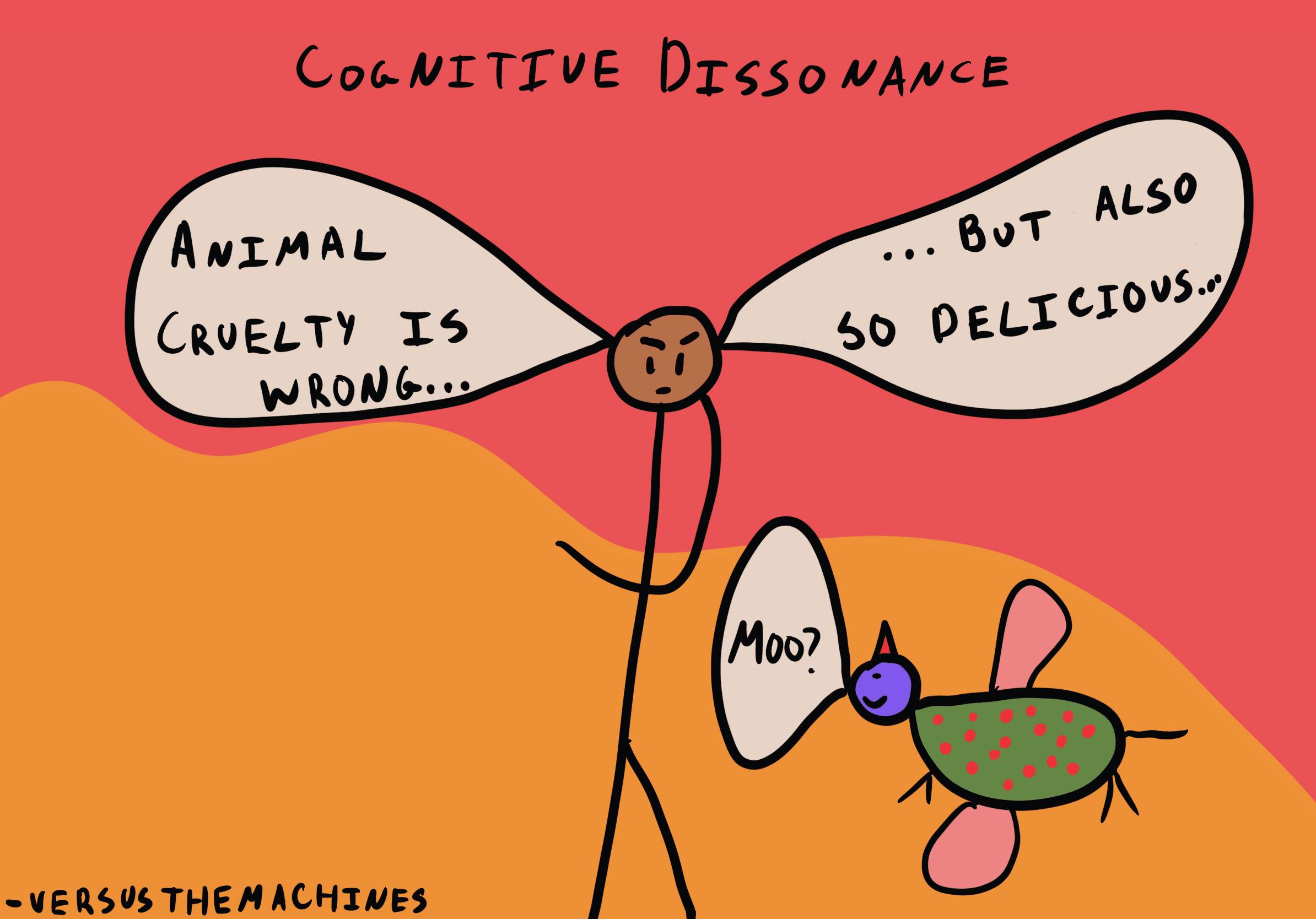Why is it so hard to change someone's beliefs?
Cognitive Dissonance
, explained.What is Cognitive Dissonance?
Cognitive dissonance is the psychological discomfort we experience when we hold two or more conflicting beliefs, attitudes, or values simultaneously. To resolve this tension, we often change, justify, or ignore the conflicting information.

Where this bias occurs
Consider the following hypothetical situation: John is an avid environmentalist. He is president of the environmental club at school, goes to climate change marches, and even owns an electric car.
One day, John attends a lecture on the negative environmental effects of certain food products. To his dismay, John learns that coffee processing plants are responsible for water pollution that destroys ecosystems and shrinks biodiversity. His stomach drops: this means that he is part of the problem he is trying to resolve.
This cannot be! John is an advocate for the environment… but a huge coffee drinker. Even he doesn’t think he can give up his morning brew, let alone convince his friends to do the same.
To get rid of the pit in his stomach and resolve his identity crisis, John quickly concludes that the speaker must not know what they are talking about. He also figures that even if drinking coffee isn’t great for the environment, he has made so many other efforts to be sustainable that it must even out. With his mind temporarily put at ease, John stops by Starbucks after class for his afternoon pick-me-up.
John’s refusal to stop drinking coffee is a prime example of cognitive dissonance at work. To create psychological consistency between his environmental beliefs and his not-so-environmental actions, John dismisses the lecture as misinformation so that his identity isn’t painfully compromised by an unbearable existential crisis.














